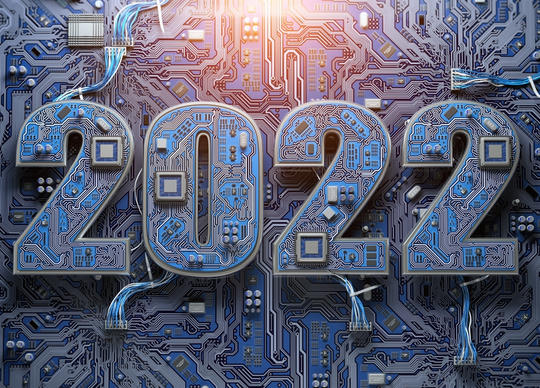
The rapid changes over the last 24 months have left many organisations reeling. It was impossible to predict most of the changes that took place because of the global pandemic. However, now that many organisations are regaining their equilibrium, it’s essential to look into the future and ensure the business is prepared for what awaits in 2022 and beyond.
Peter Fuller, managing director ANZ, Micro Focus, said, “The cyberattacks seen in 2021 demonstrated the dire consequences of falling short of appropriate levels of cyber resilience. New ways of working will reveal new dangers across the enterprise, from remote users to new supply chains, and from cloud to mainframe. Corporate IT has also changed in the wake of the pandemic and digital commoditisation will continue. Today’s organisations must be nimble, decisive, and digitally capable, while leaders must be able to cope with the unexpected.”
Micro Focus and CyberRes have highlighted nine IT predictions organisations must prepare for in 2022:
1. Artificial intelligence (AI) will help combat increasing attacks on the Internet of Things (IoT) and critical infrastructure
Because of the increased reliance of IoT devices and networked and distributed computation systems, attacks on these systems will rise. However, AI will come to the fore in combatting these attacks because of its ability to analyse vast amounts of threat-related data, detect even very subtle hints of an attack, and statistically review clues to pinpoint the devices that are being infiltrated. These services will be cloud-only.
2. Certain types of AI will emerge as relevant to cybersecurity
The types of AI that will be adopted in 2022 will be focused on specific, battle-tested techniques such as statistical learning, anomaly detection and, in a more limited capacity, natural language processing (NLP). Certain areas of AI research, such as large language models (like GPT-3), will not be heavily adopted in 2022 for cybersecurity. This is because there is not yet a good use case match within cybersecurity for those technologies, and also because the computationally expensive and non-transparent nature of these approaches do not lend themselves well to current security operations centre (SOC) needs.
3. Machine learning will drive cyberattacks
The increased use of AI extends to cyberattackers who will use unsupervised machine learning to launch automated and autonomous attacks. The algorithms will decide on the best course of action for an attack, making them incredibly difficult to combat. This will democratise cyberattacks and deliver economies of scale that benefit cybercriminals.
4. Cloud will be an attack vector
Cloud will be weaponised due to its computing power and potential anonymity to launch attacks. The difficulty involved in tracing offenders makes cloud highly attractive to cybercriminals, and this will accelerate the use of dark or black clouds.
5. The SOC will evolve
The SOC will no longer be a correlation engine but more of a threat-gathering centre of excellence. SOCs will be tasked to respond to threats and will be embedded in crisis management scenarios and strategies. SOCs will also become more automated and orchestrated with the rest of the enterprise ecosystem. SOCs may also be outsourced more often, which helps streamline and ease internal operations.
6. Software supply chain vulnerabilities
Supply chain issues continue to impact consumers and fast delivery seems to be a thing of the past. Bottlenecks indicate supply chain breakdowns caused by disconnects in process flow and interaction models. The same disconnects occur in software and product delivery processes, it’s essential to be able to validate the provenance of artifacts from software supply chains. Failing to do this creates security vulnerabilities so organisations will continue to evolve their supply chain interaction models. Application development processes now require well-trusted, well-sourced, and well-understood components, especially for low-code/no code application creation.
To overcome these issues, organisations must include supply chain design and artifact verification as part of every application. Simplification of process delivery models to validate artifacts, remove manual interaction steps and automate away the risks of malicious or unsecure inclusions is key to maintaining delivery velocity and an ability to create high value products to address business requirements.
7. The knowledge economy
Data will continue to drive decisions and its use will expand. Whether it is keeping people or organisations safe, understanding user and customer behaviour and sentiment, the concept of digital forensics – genuine intelligent insight – will further advance the space.
8. Everyone and everything, everywhere
Accepting, adapting and leveraging a many-to-many topology will cause IT leaders to rethink, remodel and reinvest to support greater (and compliant) collaboration and cohesion between teams, applications and customers.
9. Agile IT factories
Foundations for future growth reside in the core systems, applications, teams and processes of today. Streamlining operations and delivery processes, using factory or value stream models, will further enhance existing agile or DevOps processes to instil greater efficiency and allow room for transformational change.
Peter Fuller said, “Organisations must always leave room for unexpected developments. However, it’s important to control and harness all aspects of the environment wherever possible to minimise risk and increase the organisation’s ability to react positively to changing circumstances. Organisational leaders will need to carefully manage ongoing transformations and ensure that outcomes are predictable, which requires solid, trusted foundations. Being aware of these emerging trends in 2022 will help.”






